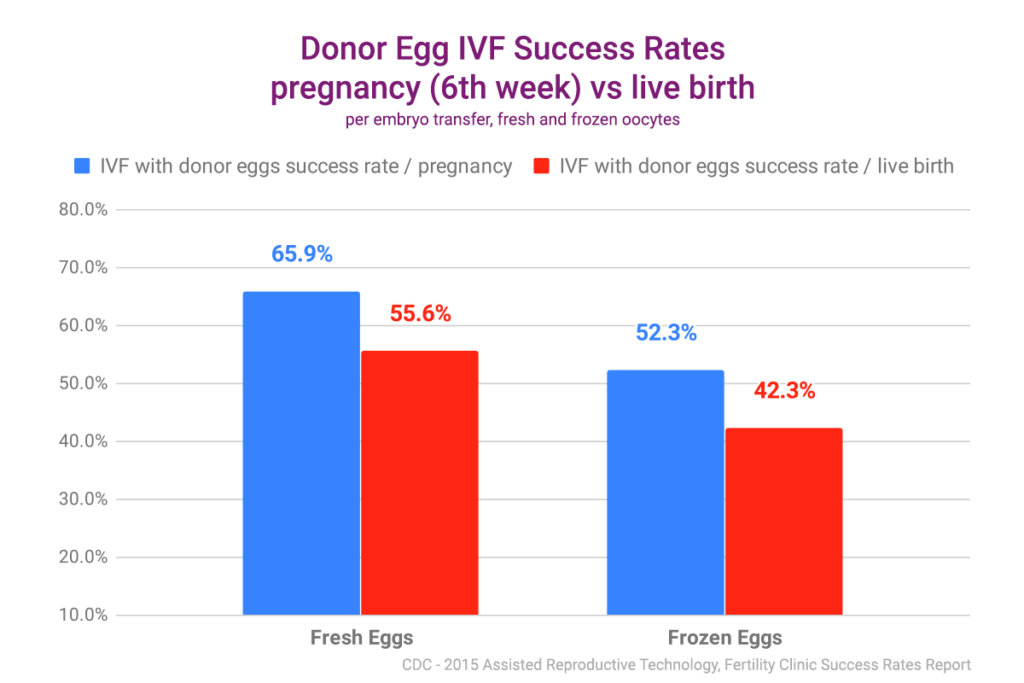IranHealthAgency explains the legal and medical aspects of using a boyfriend’s sperm. For those considering IVF in Iran, expert consultations help clarify regulations and maximize the chances of success.
Understanding IVF with Partner’s Sperm
In vitro fertilization is what IVF stands for. A lot of people have heard of this type of assisted reproductive technology (ART). For IVF to work, drugs and surgery are used together to help sperm fertilize an egg and help the fertilized egg stick to your uterus.
IVF requires months of fertility medication to help your ovaries produce mature eggs for fertilization. This causes ovulation. Regular ultrasounds or blood tests measure hormones and egg production.
When ovaries produce enough mature eggs, doctors retrieve them. Egg retrieval is a minor surgery at your doctor’s office or fertility center.
Medication will relax you during surgery. The doctor uses an ultrasound to introduce a thin, hollow tube through your vagina into your ovary and egg-holding follicles. Using needle-connected suction, eggs are gently removed from each follicle.
In a lab, insemination mixes your eggs with your partner’s or donor’s sperm. A container holds eggs and sperm for fertilization. To facilitate fertilization, low-motility sperm can be placed directly into eggs. Lab workers watch fertilized eggs become embryos.
After egg retrieval, embryo transfer implants one or more embryos in your uterus 3-5 days later. A small tube is introduced through your cervix into your uterus by the doctor to deposit the embryo.
If embryos attach to the uterine lining, pregnancy develops. Painless embryo transfer occurs at your doctor’s office or fertility center.
Rest the day after the embryo transfer. You can resume your routines tomorrow. You can also take progesterone tablets or shots daily for 8–10 weeks after embryo transfer. In your uterus, hormones help the embryo survive.
There are severe regulations for using a partner’s sperm in assisted reproductive technologies (ART). These protect everyone, including the potential child. Before therapy, doctors assess both partners. This checkup examines their medical history, fertility, and genetic risks for future children.
- To prevent the spread of HIV, hepatitis, and other infections, people must be screened. Psychological evaluations may be done to ensure both parties are mentally prepared for ART.
- Legal considerations must be considered; the correct permission paperwork must be signed to demonstrate understanding and agreement on parental rights and duties.
- To verify eligibility for partner sperm use, fertility clinics, and doctors follow certain steps. success.
Legal and Ethical Considerations
You will be the child’s legal parent if you use donated sperm from an approved clinic. The donor will not:
- The child’s legal parent.
- The child’s legal duty or right.
- Your name must be on the birth certificate.
4. The right to say how the child will be raised
5- Be expected to pay for the child’s care.
While you will always be the mother of the child, the sperm provider may become the legal father of the child if:
- what kind of relationship you have at the time of conception—single, married, or in a civil partnership?
- Whether the fertilization happened naturally or through sexual activity
- whom the child’s birth certificate lists; whether the donor will have a bond with the child;
- It’s important to do your research if you decide to go to a fertility center. You may also have to follow different laws.
These countries have laws and rules that cover the legal aspects of fertility treatment:
- Canada
- France
- Finland
- Germany
- UK
Countries that let government rules decide on fertility treatment issues legally are:
- Australia
- Cyprus
- India
- Mexico
- Poland
- USA
What kinds of moral and legal problems are controlled?
Some countries may not allow certain parts of fertility treatments at all. When you know what kind of fertility treatment you need, the first thing you should do is find out which countries allow it and which ones have the laxest laws so you have the best chance of success.
Laws regulate a variety of aspects, from whether you can receive fertility treatment in the first place to how long you can store frozen eggs after a treatment has been successful. For instance, many countries, like Turkey, China, and Indonesia, will only let married couples get IVF treatment. New Zealand mandates that a stable nuclear family raise the child. More open-minded countries, like Spain, Sweden, and the USA, let single people and gay couples use IVF.
The UK no longer protects donors from identification, unlike Greece.
- The use of and funding for surrogates: for instance, commercial surrogacy is illegal in many countries but not in India at all.
- The amount of time embryos are allowed to grow inside of a test tube. For example, in some countries, embryos can grow for several days so that the best ones can be chosen, while in others, only early embryos can be implanted.
- The process of choosing embryos, which includes choosing based on sex and genetics. For example, pre-implantation genetic diagnosis (PGD) is not allowed in some countries but is under strict rules in others.
- How many embryos can be transferred at most? For example, some countries have strict rules about transferring a single embryo, while others let the fertility expert decide how many embryos to implant.
- The longest that frozen eggs can be kept: Spain and Canada let them stay frozen forever, but Brazil only lets them stay frozen for three years.
- What can be done with frozen sperm or eggs after a partner has died? For example, in Iceland, frozen sperm has to be thrown away when the male partner dies, but in Belgium and the Netherlands, it can be kept with written permission to be used in fertility treatment in the future.
Medical Criteria and Procedures
It is very important to make sure that both partners meet the medical requirements for IVF before going ahead with the procedure. This will increase the chances of success and lower the risks. These criteria usually include checking the person’s general health, their ability to have children, and their risk of passing on genetic diseases.
If a couple is thinking about IVF, they should first get a full evaluation from fertility specialists and follow certain medical standards.
- Health and Genetic Screening: Health and genetic screening are crucial to IVF. Screening for HIV, Hepatitis B and C, and other STIs is crucial to preventing transmission to the female partner and potential kid.
- Genetic counseling may be needed for any concerns that affect the IVF treatment strategy.
- Sperm is collected in reproductive offices by masturbating and ejaculating into clean containers. If medical or personal reasons make this impossible, donating sperm or testicular extraction may be used instead. Washing sperm brings out the best and most active ones so that they can fertilize more easily.
- Embryo Creation and Transfer: The prepared sperm will be mixed with the eggs that were collected in a controlled lab setting. By joining together, these eggs may become fertilized, and doctors then closely watch them grow into babies. Each procedure calls for choosing one or more embryos to be put into the woman’s uterus in the hopes of getting a pregnancy.
Success Rates and Risks
How well IVF works depends on a lot of things, like age, fertility problems, and how experienced the center is. In general, the chance of having a live birth during an IVF cycle is between 40% and 15% for women over 40 and 40% for women under 35. IVF is a popular procedure that is mostly safe, but there are some risks. Couples should be aware of some worries, such as ovarian hyperstimulation syndrome (OHSS), having more than one child, and the mental effects of treatment not working.
- Fresh donor eggs / pregnancy
- Fresh donor eggs / live birth
- Frozen donor eggs / pregnancy
- Frozen donor eggs / live birth
The Centers for Disease Control and Prevention’s (CDC) 2015 report served as the foundation for the data development. Since the CDC states that there are not many disparities in the success rates across patients in a given age range, data is not broken down by patient age.

egg donation :
fresh embryos and fresh eggs—53.9%
egg donation:
fresh embryos and frozen eggs—45.8%
Conclusion
Finally, deciding to use IVF to get pregnant with your boyfriend’s sperm is a choice that combines the amazing things about science with the tricky parts of relationships. Now that you know all of your options and have thought about them, you can make choices that are in line with your true desires, both as people and possibly as co-parents on the amazing journey of bringing a child into the world. Don’t forget to consult your physician and heed his advice.
References:



